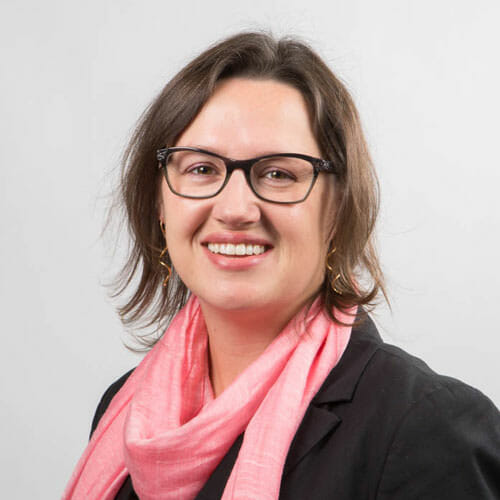
Photo by the University of Alberta. The Student Connect centre.
The Challenge
Run-around, duplication of services, confusion for students, inconsistency of service delivery–these are just some of the challenges that come about as a result of the complex bureaucracies in higher education. As student services professionals, we all do our best to support our students, but there comes a time when a fundamental change, and a reimagining of how we do things, is required to address these issues.
Like many large institutions, at the University of Alberta we operate in a decentralized environment. We support approximately 40,000 students across three main campuses in our province; we have 180 staff and 80 student volunteers in the Office of the Registrar (RO); and in the 2015/2016 academic year, we had a total of 104,252 interactions across all three channels (phone, email, and in-person). This volume has presented us with a challenge; our old, decentralized model was not enough to ensure we could help students access key services easily.
In 2010, the RO at the University of Alberta began a journey to redesign what front line student service would look like. At the time the RO supported seven service points for students. Something needed to change and that change became our our “one-stop”, supported by a new student focused RO strategic plan. Our mandate was “to develop an ambitiously transformative service delivery model for the RO that is student centred, that challenges the University of Alberta to become a leader in providing top notch student support, and that is responsive to the needs of the Campus community.”
This article explores what we learned through the development and implementation of our new service model, and shares some of our successes and outcomes thus far. If you are looking to transition to or improve a one-stop student services model on your campus, we hope you will find the recommendations below useful.
Our Plan
On July 15, 2013, after 18 months of planning, we launched Student Connect, our one-stop service centre. The centre was guided by a new service delivery model, developed and validated with students, staff, and key stakeholders, with five key pillars: prioritization of self-service, no physical line-ups, reducing the run around, increased accessibility and flexibility, and increased approachability.
The new centre was also structured to ensure that service across all channels would be managed in Student Connect – email, phone and in-person. Staffed by only six student service advisors at opening, this centre brought together the services associated with:
- Admissions
- Prospective student advising
- Registration
- Student records
- Convocation
- Fee assessments
- Scholarships and awards
- Financial Aid (added September 2014)
Our Approach and What We Learned
This journey was just as much about the process for us as it was about the outcomes. What follows is a glimpse into the process we used – and specific recommendations we have for those institutions embarking on a journey like this one.
SETTING THE STAGE FOR A ONE-STOP
- Project team: Don’t waste the opportunity to create buy in through your project team. Consider creating meaningful roles for current staff and give them release from day to day work to focus on the project.
Our team was entirely made up of current staff that applied for specific project roles; they were seconded full time to the project for up to 18 months. This was a significant investment but helped to foster change champions from within the ranks of staff. When specific skill sets were needed, such as business process mapping, we provided the team with training and expert mentors. The project team helped to build greater capacity within our staff and foster more meaningful outcomes. - Evaluate your whole organizational structure…not just services: Fundamental change means looking at the organization as a whole.
As part of the project we looked at every job description with the RO and evaluated it against the new service model and one-stop structure. To do this we brought in a full time position from central HR for support. The result was an update or rewrites of every position in the RO, the restructure of many of our units, as well as the creation of Student Connect Without this comprehensive approach our change at the service end would not have resulted in shifting our whole organization in the direction of a students first experience. - Gather campus and stakeholder input: Check early and often!
We consulted with stakeholders from across campus as well as with our students to determine their needs and then continued to validate throughout the process. It wasn’t perfect but it helped to foster an investment in our change across the campus community. - Create partnerships: A central unit is only as good and the partners it has, this applies both internally and across campus.
Large campuses will always require referrals and escalations to meet student needs. In order to do this we spent time fostering partnerships and referral processes across our campus. This is a continuous process we work on to this day. Like many post-secondary institutions, we have a variety of limitations that work against seamless referrals (technology, constantly changing information, differential policies etc.). Person to person partnerships have helped to offset some of these limitations. - Embed an ongoing role for your students: If you’re serious about being student centred you need a real role for students at the heart of your business and not just as your client.
As part of the project we created, and maintain to this day, our Student Advisory Committee. This committee is made up of about 30 students from across our programs, years of study, and representing diverse backgrounds (international, aboriginal, mature students etc.). Initially the group focussed on informing the design and development of our one-stop. Now they help us with continuous improvement as well as supporting groups across the campus. - Design your space and infrastructure for success: Feeling and functionality have to come together in order to make the change feel significant to students from the first time they walk through the door.
Our project resulted in a complete space redesign that allowed us to get rid of physical line-ups, provide more privacy to students in their interactions with us, and increase the comfort of waiting. Some of the specific changes included: introducing queuing technology, providing space to our InfoLink service (a service point operated by our Students Union that provides information at various locations around campus on items related to academic support, campus information, and student life), building breakout rooms, adding soft seating and providing more outlets for charging computers and phones. We also changed the color scheme and introduced some fun visuals to make the space less serious and more student friendly.
CONTINUING OUR LEARNING
- You likely won’t get the model right on the first try. And that’s OK.
Sometimes the fear of the unknown can prevent us from taking action. While there are very good reasons to do research, compare models, plan and prepare for a change to a one-stop service model, there also comes a time where you must take action. Through this process we have learned that there will always be something you don’t know, or didn’t anticipate, or got wrong. But you won’t actually know any of those things until you make the decision to change the model.
- Appreciate the change curve:
When you take on initiatives like this, there is a very clear change curve. At the beginning of the change you may find that staff have varying levels of buy-in to the new model and that processes that worked on paper aren’t working in implementation. Sometimes we aren’t able to fully predict volume levels that will influence the queue, nor can we predict customer behaviour at the beginning of the initiative. It is important to put processes in place to assess and evaluate the model and to remain flexible to making adjustments when necessary. We implemented the process of “Plan, Do, Check, Act” and staff became very familiar with this evaluation process. This helped them to recognize that the first try wasn’t necessarily always going to be the final state. For us, it took about 2 years for our new service model to start operating efficiently, effectively and predictably. Once we hit that point, we were able to take a step back and say, “OK, what next.” It is key to remember that depending on where you are in that curve, and how supportive your staff and leadership are at any given time, will influence what you can accomplish in that phase. - Pay attention to how you keep generalist staff engaged and be intentional about what staff retention goals you have:
Student Connect is currently staffed by 13 Student Services Advisors (an increase from the original six). Our Advisors are generalists and are all trained to be able to serve students at the same level across a broad range of services. While intense at the start of onboarding, the challenge we are beginning to notice with this model is that Advisors get to a level of mastery within about a year to a year and a half. This creates a risk that Advisors no longer feel challenged by the work they do and begin to leave for other opportunities. Our goal is to retain advisors for at least 3 years in order to get a return on our investment after an intensive training program. In order to counter this effect we have implemented Advisor specific projects to allow them to continue to grow and be challenged while still serving students on the front line. - Make time for team meetings and professional development:
Student Connect is open daily from 8:15 a.m. – 4:15 p.m. with the exception of Wednesdays when we open at 10 a.m. The late opening time on Wednesday allows for a weekly meeting with our entire team. We use these meetings to check in on our team morale, provide important information, refresher training and updates, as well as work on projects. Without this dedicated time to meet, our staff would never be able to gather together as a group without requiring overtime. We also plan four, half day Professional Development days a year that are scheduled during the point in the academic terms where we have the least volume. We use this time to build the skill set of our team so that they can serve students better. - Own the Role of “Canary in the Coalmine”:
Our team is the front line for all in-person, email and phone inquiries to the Office of the Registrar. This puts us in an excellent position to notice trends, and provide feedback and input to handle those situations. If a system is down, or mass email has been sent out accidentally, or a process that a student needs to complete is confusing, our team will be one of the first to notice and raise the flag. We have learned that it is important to have avenues where staff can report these issues and also ensure the mechanisms to deal with the situations quickly. - It’s never just a transcript:
One of the advantages to moving to a one-stop model is that it allows the advisor to see a bigger picture and support the student in a more holistic manner. Students will sometimes present with one issue, when in reality the system or questions we are able to ask illuminate an entirely different issue. We pride ourselves on asking intentional filter questions to get at the heart of the matter for the student.
The Results
The results are in!
Over the past three and a half years we have observed many successes and outcomes, some we predicted and some we could never have foreseen. Below are just a few that have continued to encourage us to along this journey and which have validated our choice to pursue a one-stop.
- Significant decreases in wait-times for services: In 2013 our average wait time for in person service in September was almost 18 minutes In September 2016 we had reduced this to 6:23 minutes!
- Reduction in number of in-person inquires for items that could be moved to self-service. We were able to identify what kinds of services to move online for the largest impact because we were better able to see across service channels in the new model.
- High rates of student satisfaction with our service provision: In the 2016/17 academic year 79% of students receiving service through student connect agreed or strongly agreed with the statement “Overall, I am satisfied with the recent experience I had with Student Connect.”
- An increased ability to support faculty as they work to serve students. Introducing communications tracking and a single point of service has streamlined our support of faculty student service points and also allowed us to give them more detailed information on particular students issues.
- Greater student engagement through our Ambassador program. Having our current students volunteer to triage visitors to the centre has resulted in a much closer connection between staff and students and provided another avenue for peer to peer helping. Collectively our Ambassadors volunteer over 8500 hours per year!
- Fostering more regular communication between units within our building. By having a single unit provide service delivery for the whole office has required that we learn to communicate better across the silos. This has helped in service provision but even more so it has improved our ability to see problems before they happen and respond with a more agile approach when they do occur.
Here is what students have said:
- “Having dealt with the Office of the Registrar in years past, I was impressed with the improvements that have been made since Student Connect began. It’s great to see the University taking steps to ensure that the issues important to students are being addressed as smoothly as possible. Aside from the positive experience I had at Student Connect, my matter was also dealt with by the Registrar much more promptly than I anticipated. I’m very satisfied!”
- “Student Connect is the most helpful part of the U of A. They always go above and beyond to help me with anything that I might need to help solve my problem.”
What’s Next?
Student Connect has now become an integrated fixture within the Office of the Registrar and on our campus. As we look to the future, we continue to experiment with new service options for students, explore ways to improve service times, and expand our ability to offer services online and outside of standard business hours. We look to be a leader in student services on campus and in our peer group, to do this we know we will keep evaluating, changing and growing.
We hope you have found this article – and our lessons learned – useful!



